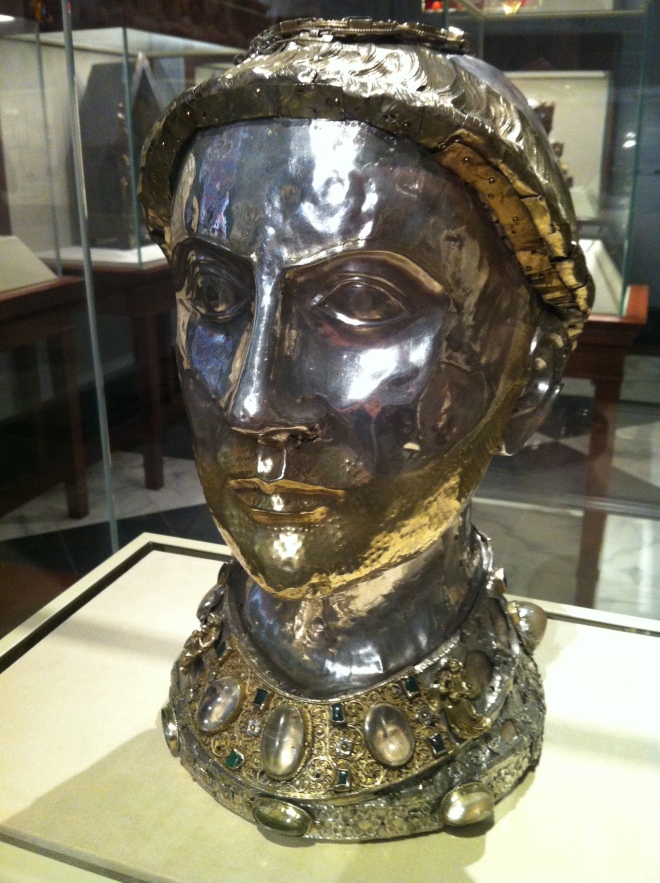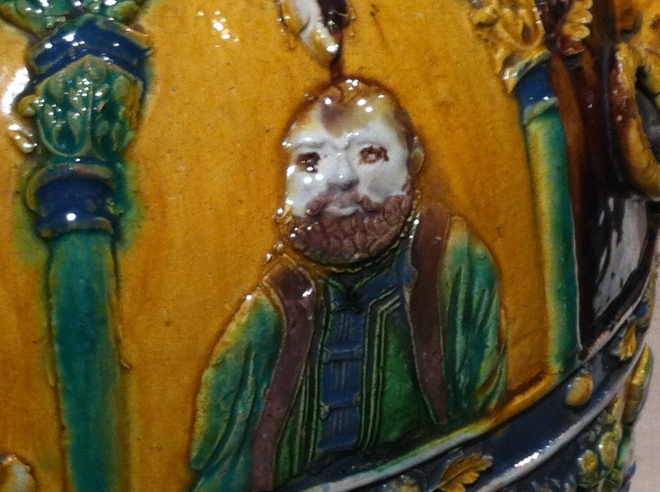Beijing, 25 May 2013
Many, many (many…) years ago, as a fresh-faced engineering undergraduate, I was introduced to the concept of the Random Walk. My memory is hazy now, but as I recall it had something to do with a way of modelling the behaviour of molecules in a gas. The idea was that molecules could be considered as little ping pong balls taking random paths as they whizzed around colliding with each other chaotically.
If I bring this up, it is because during the visit which my wife and I made two weeks ago to the Metropolitan Museum in New York I rather felt that we had unwittingly gone on a random walk of our own. I should explain that whenever we are in New York we always try to slip in a visit to the Met. It is really the most wonderful museum, with an amazingly extensive collection. We normally just go along and wander around in a rather purposeless way, but this time I decided to be slightly more ordered about it. I checked on the museum’s web site to see what exhibitions were on and drew up a list of those which sounded interesting. My list included, in no particular order, “Impressionism, Fashion, and Modernity”, “The Roof Garden Commission: Imran Qureshi”, “PUNK: Chaos to Couture”, “Photography and the American Civil War”, “African Art, New York, and the Avant-Garde”, “Street”, “Cambodian Rattan: The Sculptures of Sopheap Pich”, “Objects from the Kharga Oasis”, “Plain or Fancy? Restraint and Exuberance in the Decorative Arts”. A rich diversity, I think you will agree. Once arrived, we decided to visit these various exhibitions as the fancy took us, interspersed by two visits to the cafeteria. The result was that we criss-crossed the museum quite randomly, finding ourselves walking unwittingly through many different parts of the permanent collections and bumping into admirable pieces along the way.
So it was that at one moment early on in our random walk we found ourselves in the Cypriot Antiquities section – not a section I would normally have ever thought of visiting. And there, I suddenly found myself nose to nose with this statue.
He was someone from the 4th Century BC, I learned from the label, but my immediate thought was “Good Lord, it could be one of my children’s friends”, and suddenly the 24 centuries which separated us disappeared. This was no longer a piece of art to be studied respectfully but someone I could have known and passed the time of day with. In some muddled way, I decided there and then that as we walked the various corridors of the museum, I would take photos of some of the more interesting faces we came across, as a testimony to all that humanity lying just below the surface of paint and wood and stone and paper that surrounded us. Here is my resulting photo album, shown in the random order that I came across them:
A ruler from the area of Iran, 40 centuries ago. This one gave me goose-bumps because I have a copy of it buried in my warehoused stuff in Vienna.
A governor, by the name of Gudea, of the city of Lagash in Mesopotamia (I like the way he holds his hands):
Our random walk is bringing us into East Asia.
A bodhisattva from Shanxi province. A mere 15 centuries separate us. Is it unfair to say that he looks rather self-satisfied?
We jump forward 15 centuries, give or take, with this timid Korean scholar from the early 20th century:
A female horse rider, from the western reaches of the Tang Empire I would guess from her clothes, and very tired after a long journey I would think from the expression on her face. 13 centuries separate us.
A buddha from the area of Afghanistan when it was still buddhist, 15 centuries ago. Are we seeing the Greek influence which came from this area being conquered by Alexander the Great?
Those cupid lips! A bodhisattva from Shanxi province, 14 centuries back.
Our random walk is making us transition brutally to Medieval Europe.
A brooding Virgin Mary from 10 centuries ago.
A stern-looking saint (Saint Yrieix … who is that?), a face from 10 centuries ago.
A mourning Virgin Mary at the crucifixion from 6 centuries ago
Her mourning is German, sober and contained. This Virgin’s mourning, from the same period, is more Mediterranean. She is Spanish.
A rather foolish-looking bishop from 6 centuries ago.
The random walk is now taking us through the print and photo section.
A woman from the 1890s.
A woman from the 1930s. It’s a Pollock, which is intriguing.
Another woman from the 1930s, on the Paris boulevards.
We are suddenly back in the Cypriot section, although in a different room.
A man with a wonderful beard, from 27 centuries ago.
A woman staring death in the face, from a little later.
And now our random walk is bringing us to meso-America.
A pensive face from Mexico, 14 centuries ago.
An anguished face from 30 centuries ago, from Mexico again.
Suddenly, we lurch into Africa.
A West African woman, from a century ago.
A South African woman from just a few decades ago.
And finally as we are making for the exit, a small face on a German jug of the 16th Century catches my eye and camera.
_________________
Pictures: all mine























Great post. 🙂
LikeLike
Thank you, glad you enjoyed it!
LikeLike